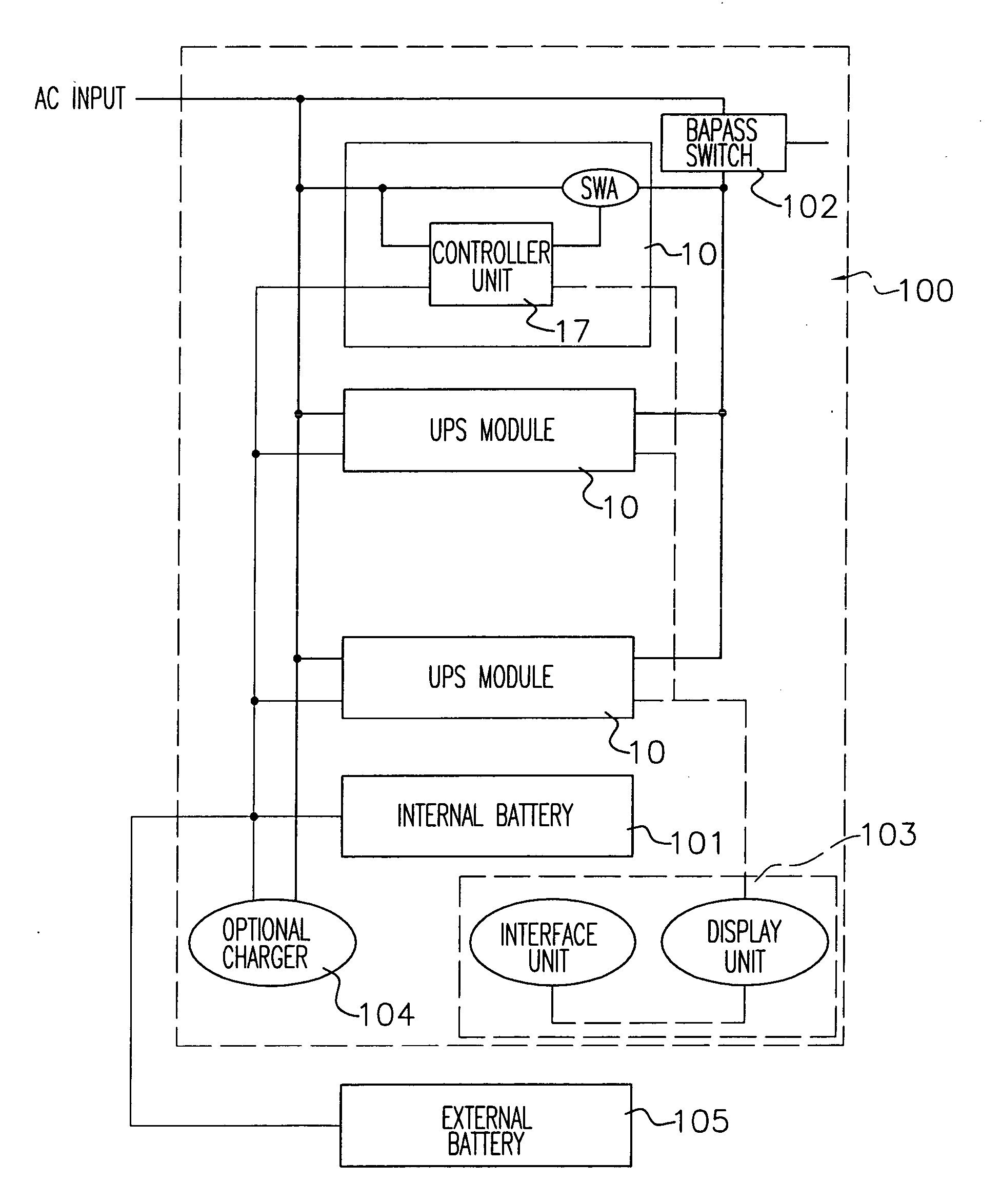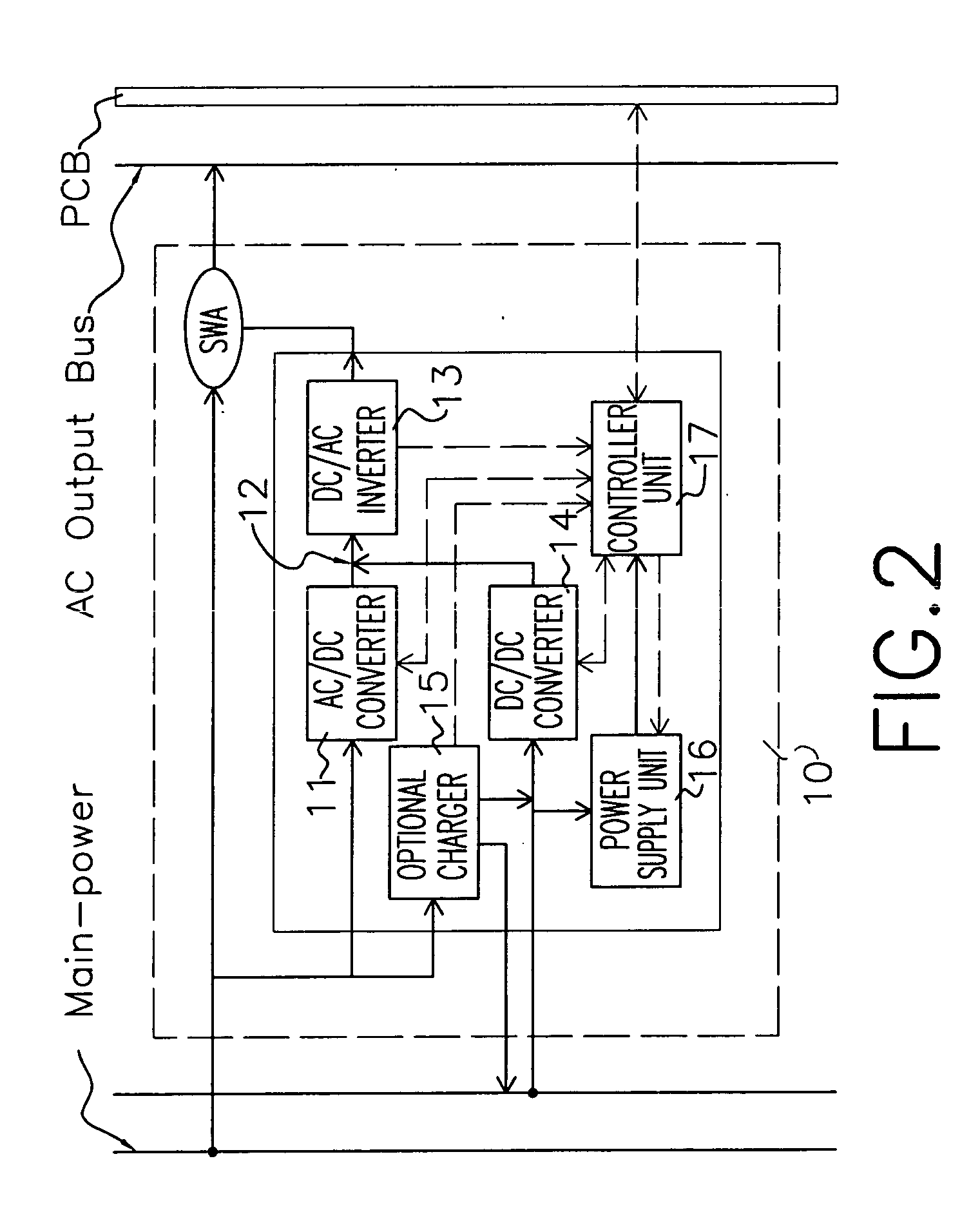Modular uninterruptible power supply system and control method thereof
a power supply system and module technology, applied in emergency power supply arrangements, process and machine control, instruments, etc., can solve the problems of data processing equipment data communication system data loss, etc., to meet the continuously increasing load requirements, the demand for uninterruptible power supply is increasing steadily
- Summary
- Abstract
- Description
- Claims
- Application Information
AI Technical Summary
Benefits of technology
Problems solved by technology
Method used
Image
Examples
Embodiment Construction
[0045] The present invention provides a modular uninterruptible power supply (UPS) system (100) containing one or more UPS modules (10) connected in parallel structure, as shown in FIG. 1. Each UPS module (10) has a unit controller (17) for controlling multi-mode switching and parallel operation with other UPS modules by connecting AC input, DC input and AC output in parallel with other UPS modules (10). A parallel control bus (PCB) is used for inter-unit signaling for exchanging operational data with unit controllers (17 of other UPS modules (10) for coordinating the parallel operation.
[0046] Each UPS module in the power supply system possesses identical control logic and functional capabilities for self-initiated role detection, master arbitration, parallel processing. Each UPS module is able to support the self-initiated role detection mode, new entrant mode, virtual master mode, and virtual slave mode.
[0047] The procedures for operating the UPS module in the self-initiated rol...
PUM
 Login to View More
Login to View More Abstract
Description
Claims
Application Information
 Login to View More
Login to View More - R&D
- Intellectual Property
- Life Sciences
- Materials
- Tech Scout
- Unparalleled Data Quality
- Higher Quality Content
- 60% Fewer Hallucinations
Browse by: Latest US Patents, China's latest patents, Technical Efficacy Thesaurus, Application Domain, Technology Topic, Popular Technical Reports.
© 2025 PatSnap. All rights reserved.Legal|Privacy policy|Modern Slavery Act Transparency Statement|Sitemap|About US| Contact US: help@patsnap.com



